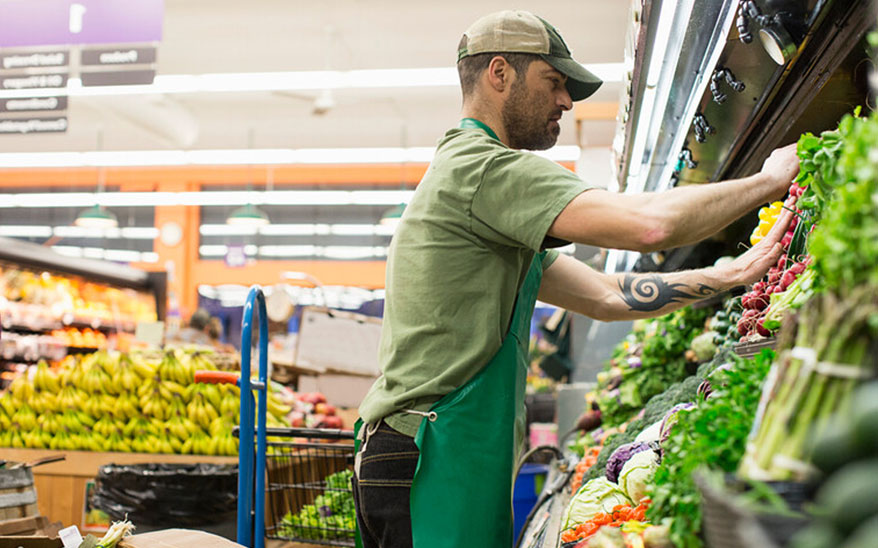Retailers Must Shift to Seamless Digital Experiences Amid Cost-of-Living Crisis
- October 10, 2023
- Manhattan

Latest research from Manhattan shows that 89% of consumers have altered their spending habits in response to cost-of-living challenges.
In an era where tolerance for mediocre shopping experiences is unsurprisingly low, there will always be winners and losers. It’s no longer enough to just serve the customer, today’s retailers must roll out the red carpet too—especially at a time when customers are becoming more discerning about how and where they spend their hard-earned cash.
As retailers battle to keep up with shifting consumer behavior, digitalization is one area that shows no sign of contracting, with many retailers choosing to double down on transformation projects and continuing to push forward with store digitization and omnichannel initiatives across both front and back-end processes. In fact, 26% of retailers surveyed told us that upgrading to a modern point of sale (POS) that can manage omnichannel scenarios is one of their top three business priorities for the next 12 months.
With added pressures on shopper wallets due to cost-of-living challenges, when consumers do decide to shop with a particular brand, they want easy and frictionless service with all retail touchpoints connected and increasingly personalized. This is particularly true in non-food retail where staff must continue to surprise and delight the customer, delivering an experience that shoppers cannot get from simply a screen. Not surprisingly, this puts the role of the in-store associate directly in the spotlight.
To manage this added weight, store associates must be armed with the right digital skills and tools needed to ‘go beyond’ the traditional role of customer service, democratizing concierge-level attentiveness and redefining customer relationships. Tech-enabled human touch will be a differentiating factor that separates the retail winners from the losers.
The skills required of staff in a grocery setting, meanwhile, will also evolve as artificial intelligence (AI) automates more tasks in the future. This will add urgency for grocery retailers to rethink and revaluate the role of their most valuable asset: their frontline staff.
As automation becomes more prevalent, retail staff will be able to focus on more valuable, customer-facing tasks and transition to genuine brand ambassadors. But how should they be rewarded? What skills will they require? And how much autonomy should they have? These are all questions that retailers need to start thinking about today if they’re not to lose their brightest and most talented staff.
It's certainly true that the most successful retailers are those that are guided by the customer, but what does today’s customer value most from their store associate?
According to the respondents, it’s possessing knowledge of the product they are thinking of buying (49%), followed by having the ability to demonstrate a product and physically show it to them (24%).
Older consumers (55+) are most likely to consider this as the most important aspect of a retail associate’s service. However, younger consumers desire personal experience of products, as they prefer associates who suggest other products that go well with what they want to buy and check stock availability wherever and whenever needed.
As the role of the physical store evolves beyond the transactional, the role of the people behind in-store customer-facing technology must also evolve beyond purely assisting the sale. Instead, they must become trusted advisors with advanced customer service capabilities at their fingertips.
This is particularly relevant for categories where the purchase is more heavily contemplated, such as furniture or consumer electronics, not to mention those that require deeper personalization such as health and beauty.
Meanwhile, frictionless and connected experiences are becoming the norm. When faced with a product that is out of stock, most consumers said they would most likely look to the store associate for assistance. Over a quarter (27%) of consumers said they would like the associate to check if the product is available in a shop nearby, while 23% said they would like the store assistant to order the item and have it delivered to their home or in-store as soon as possible—something that a unified POS and omnichannel offering makes possible.
Similarly, shoppers are increasingly turning to store associates for queue-busting options, particularly in categories like sports, leisure, household goods, and furniture. Utilizing mobile POS devices to check shoppers out on the spot has the potential to lead to improved customer satisfaction—fostering that ‘red carpet’ feeling—and, ultimately, increased sales.
To discover more insights from Manhattan’s latest global omnichannel research and understand how the digitalization and unification of the supply chain could help your teams to deliver that ‘VIP’ experience to your customers, download Redefining Retail: What’s Next for Shoppers and Retailers? Or contact a local member of the Manhattan team.





